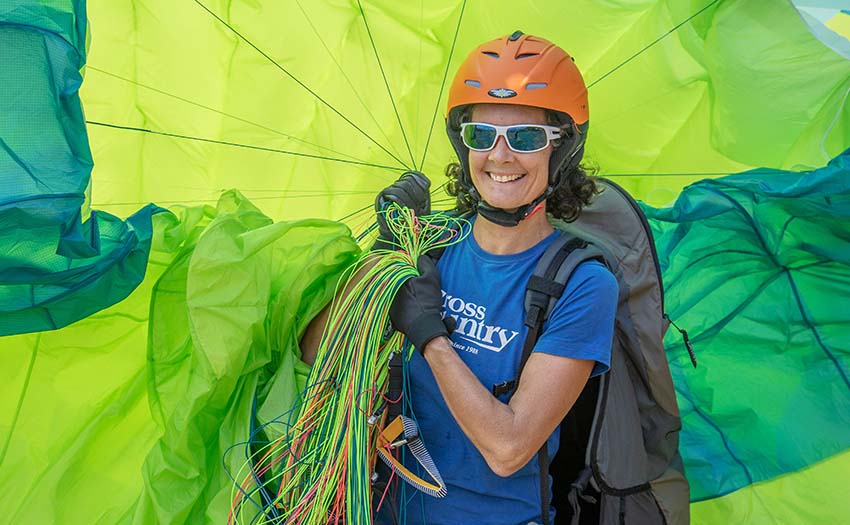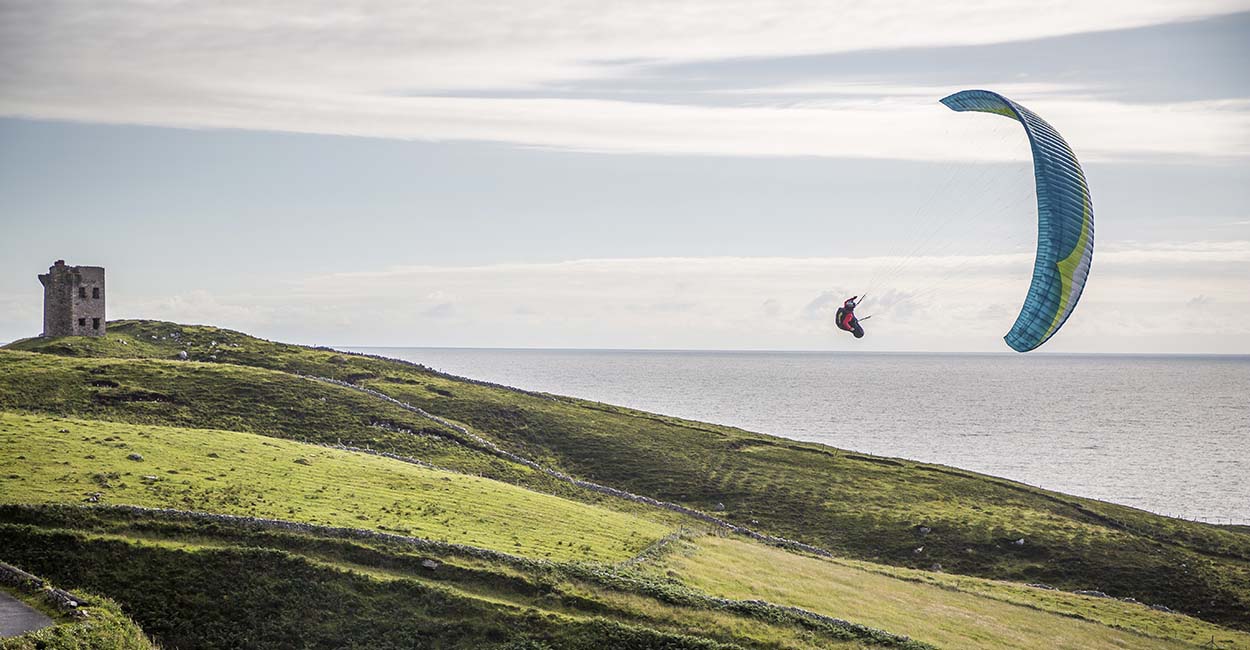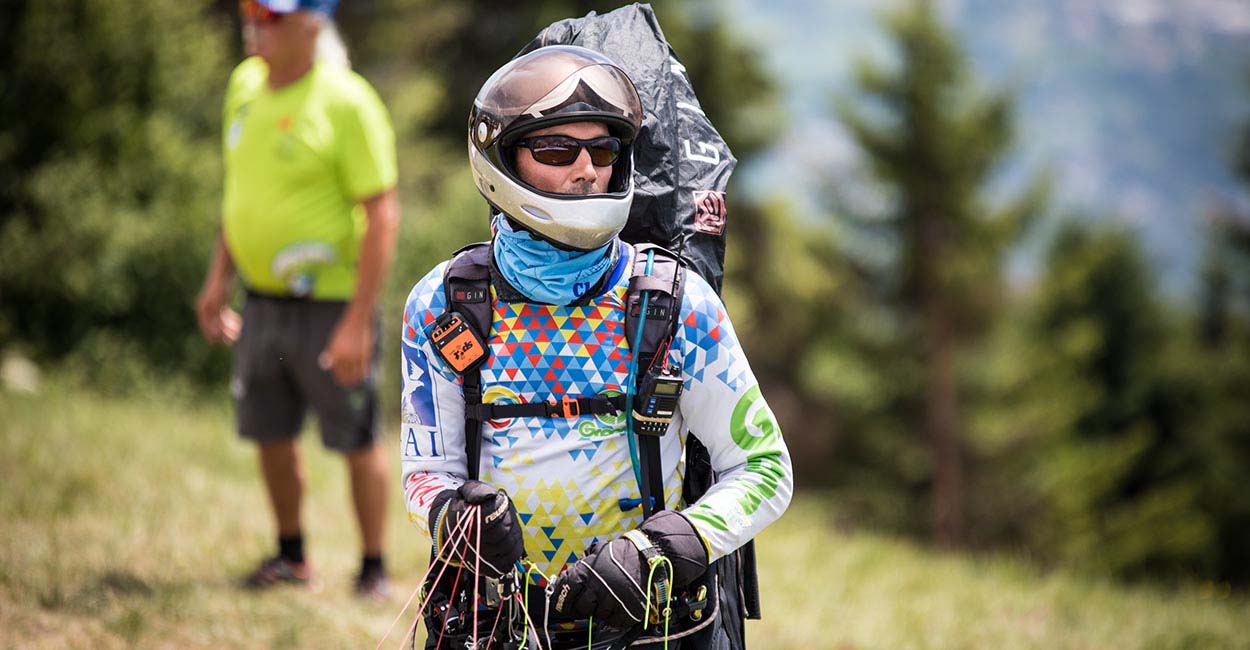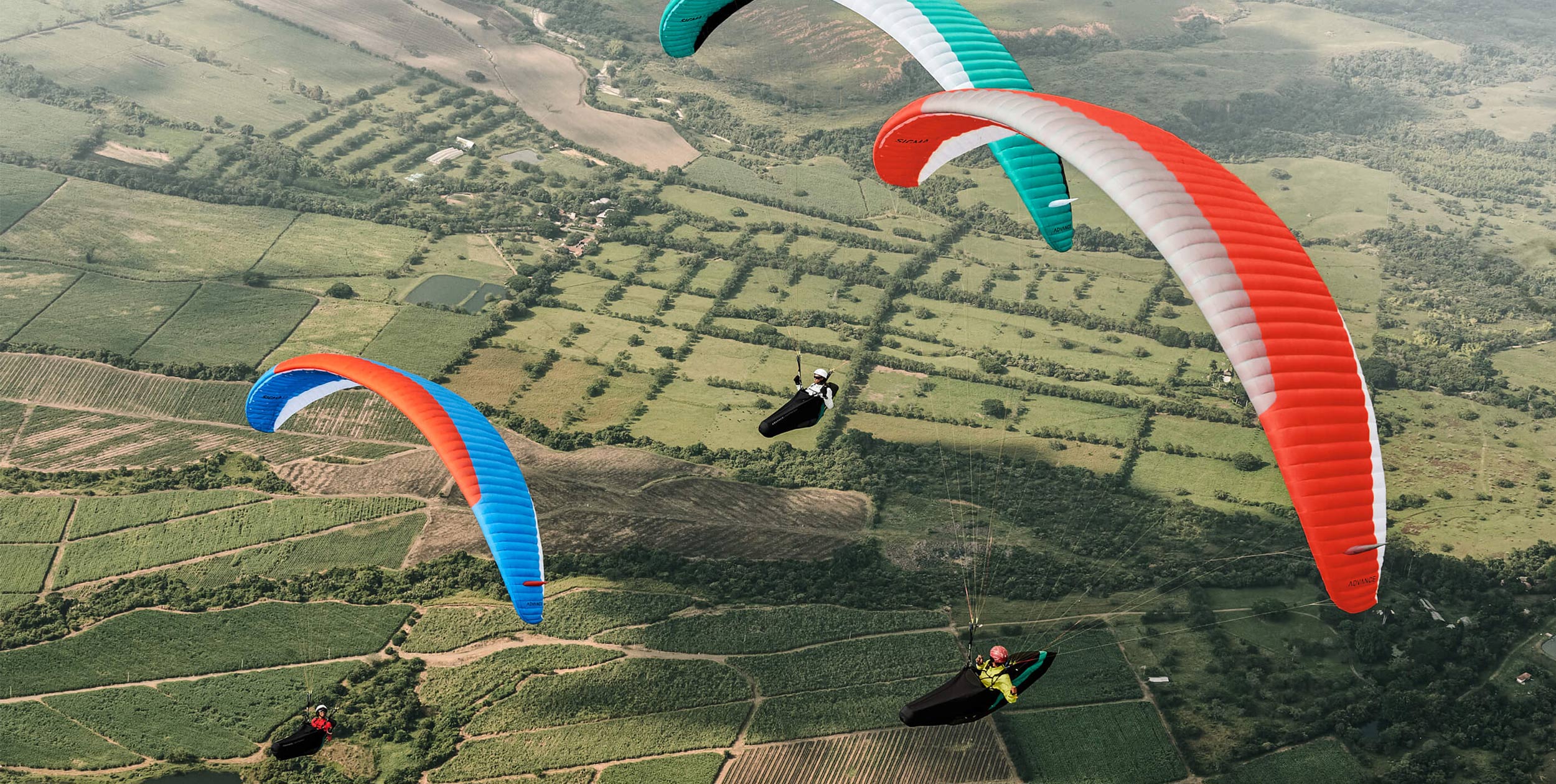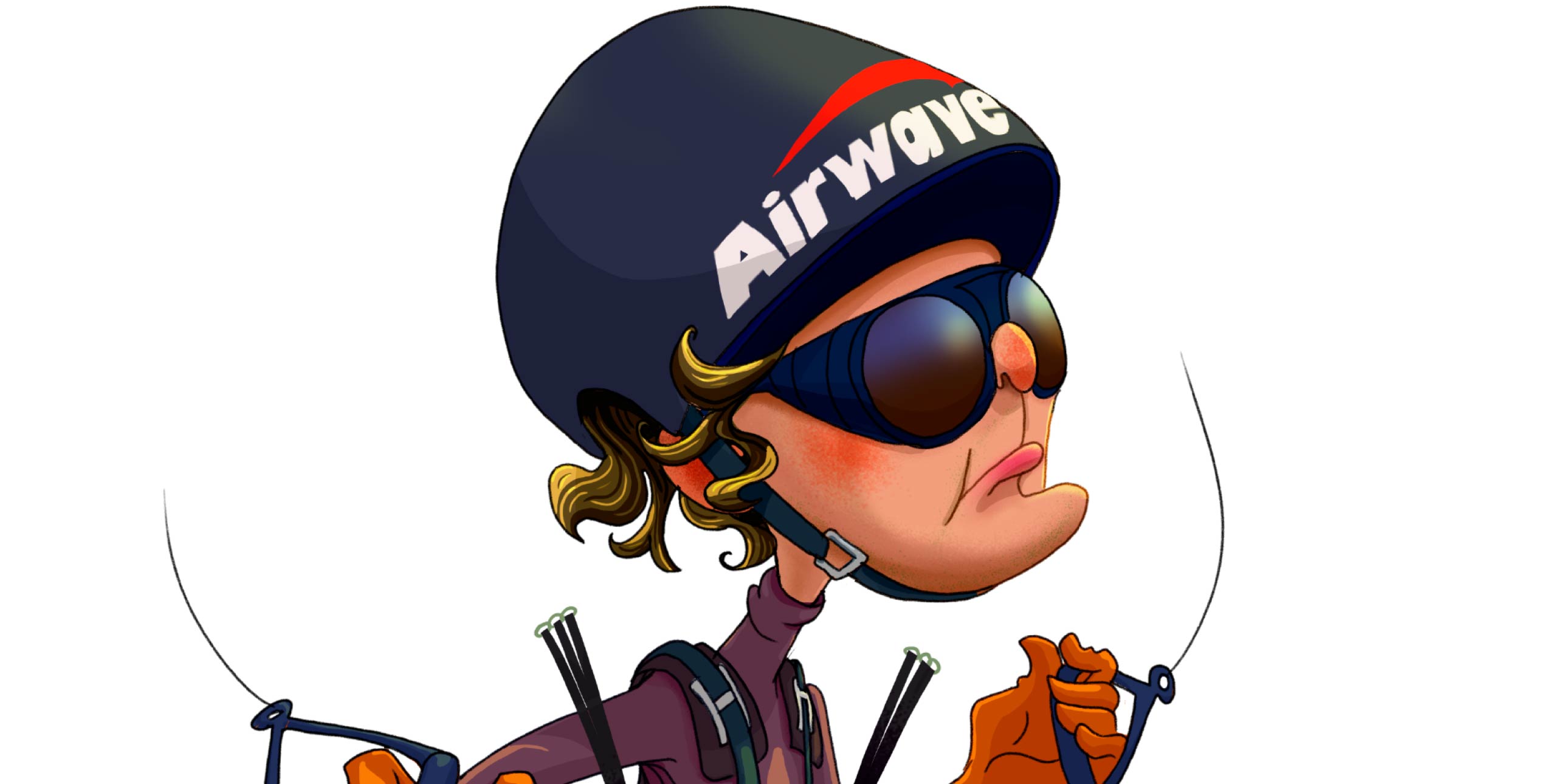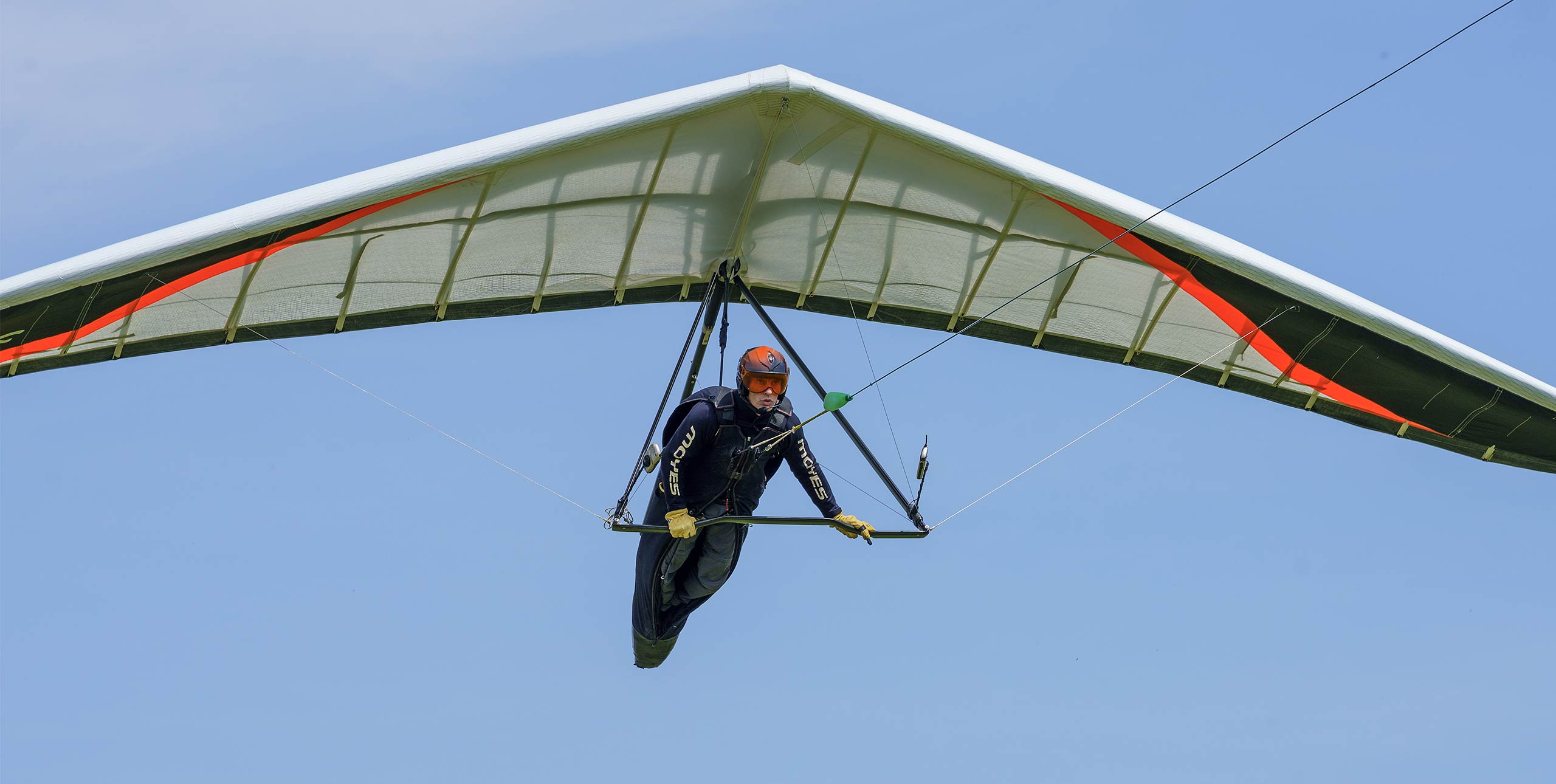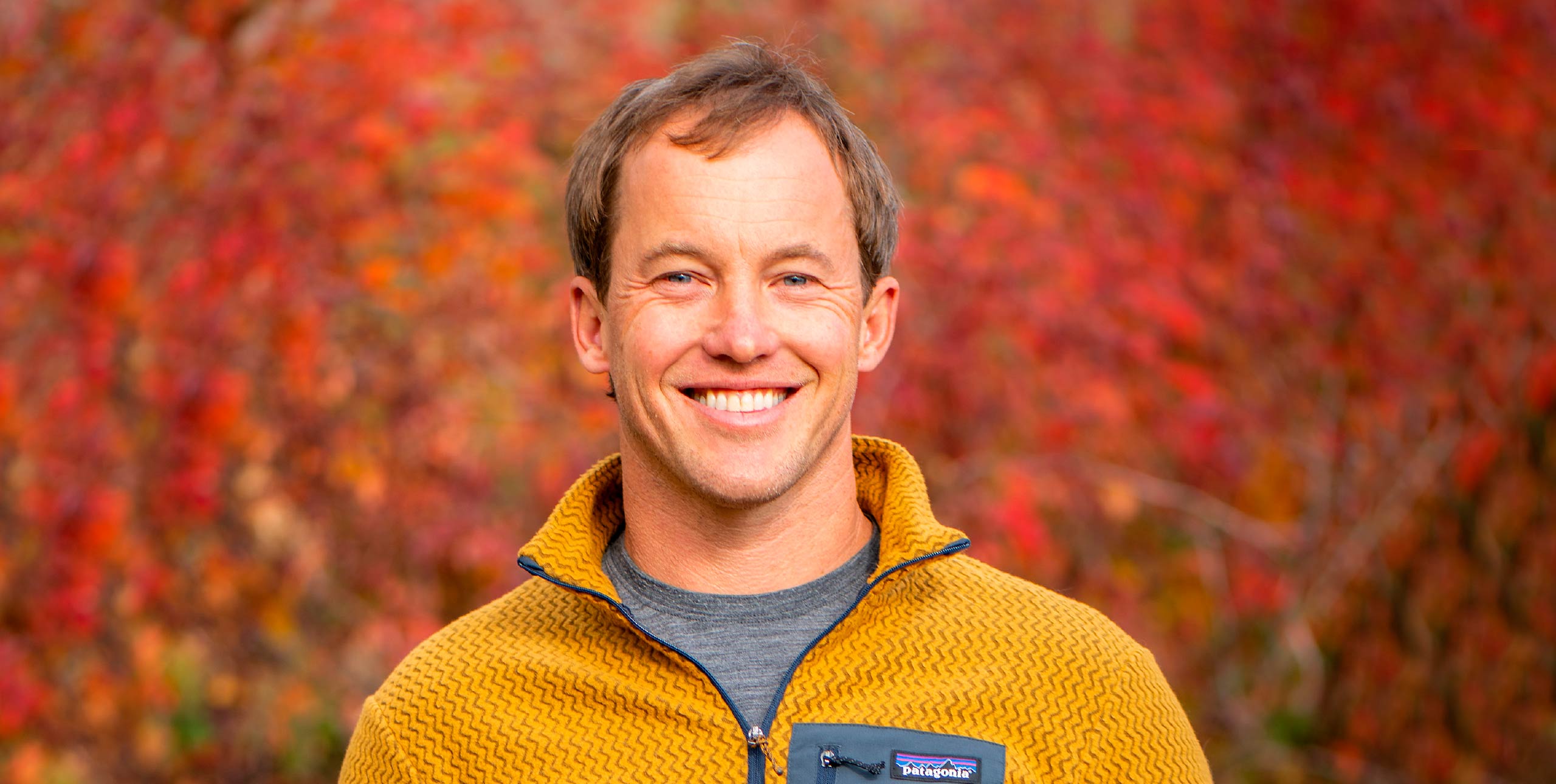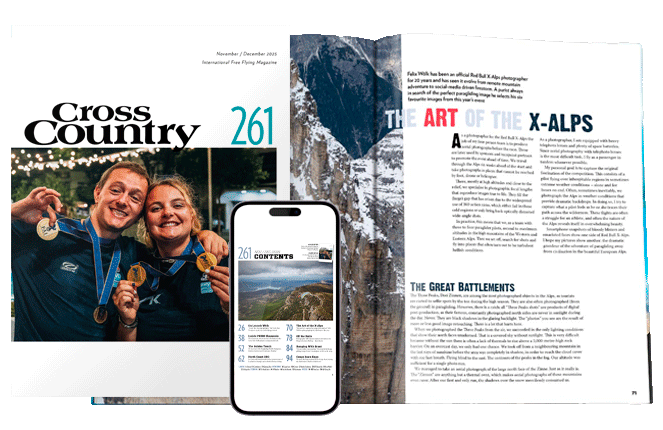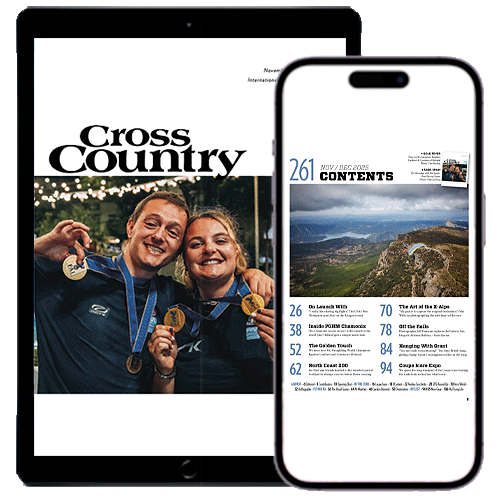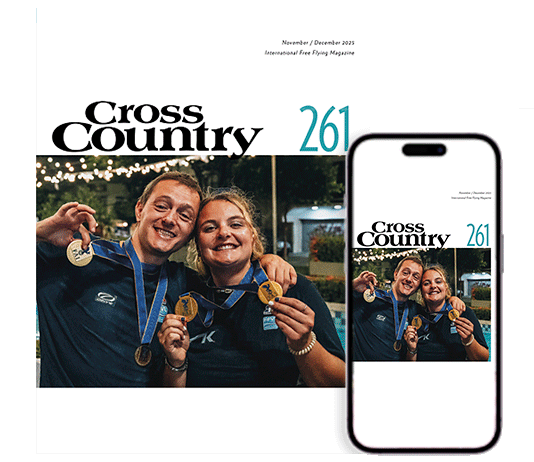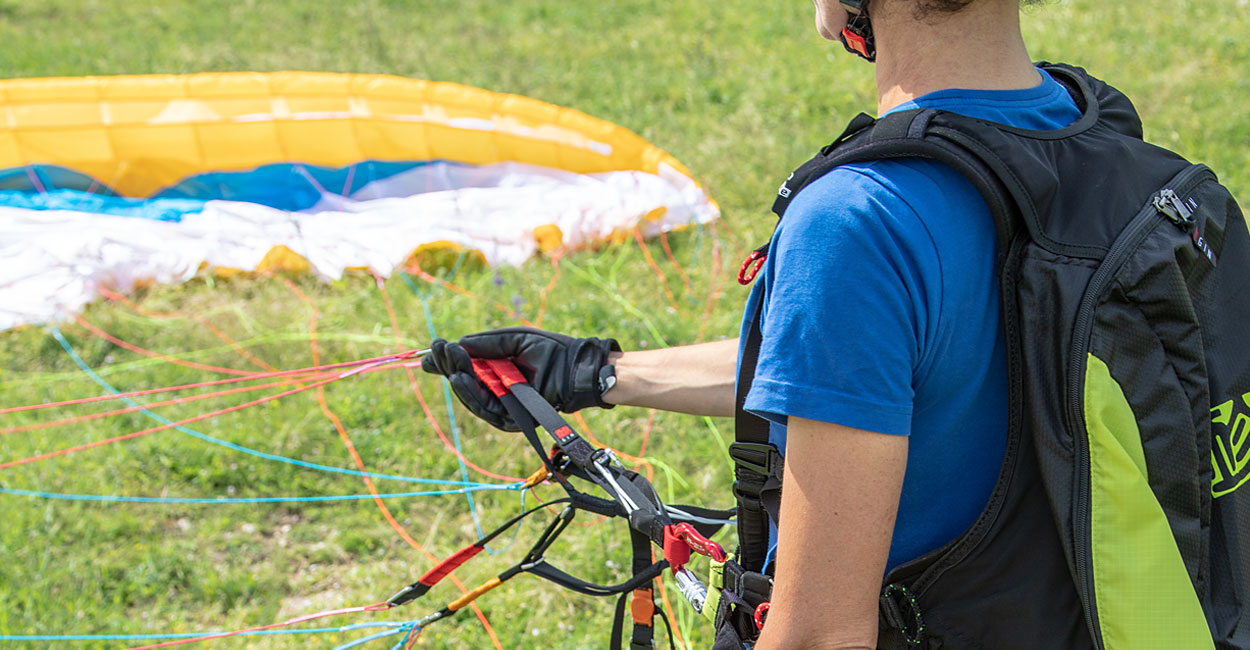
Ground-handling is the skill of managing your paraglider on the ground. You’re not flying it, and you don’t plan to fly it. You’re simply playing with your paraglider and the wind, like flying a big kite.
Regularly practicing ground handling as a new pilot helps you become familiar with your wing – and that will help when it comes to taking off.
There is plenty going on at launch already without you having to worry about whether or not you can control your glider on the ground. Other pilots getting ready, watching the windsock, pilots in the air, the terrain you are on, where you need to put your feet – all of these things rightfully demand attention when you are about to take off.
If you are happy ground handling your glider then you will be much more comfortable when it comes to launching – and that means a stress-free, easy take-off.
To practice ground-handling choose an area that is clear of obstacles and away from other pilots. At the edge of the landing field or a flat open field are good spots. Don’t ground-handle close to the edge of take-off where you might suddenly find yourself in the air if you lose control.
Wear a helmet and gloves. You should always wear a helmet when you clip-in to your paraglider, and ground-handling is no different. Hopefully it won’t happen but a helmet will protect you if you got dragged, for example. Gloves will protect your hands when reaching for lines and brakes.
Always clip-in to your harness properly. You don’t want to suddenly find yourself lifted into the air by a strong gust and not be safely in your harness.
You can ground-handle in strong wind, but for your first few sessions on your own it is better to keep things sensible and ground handle in a light to moderate wind. Certainly less than 25km/h.
There are several techniques for reverse-launching your paraglider, and you should practice the one you have been taught and know best first. Once you have full control of your standard technique, feel free to experiment with and learn other techniques that you learn about.
Ground handling should not be all about bringing the glider up and whacking it back down again. Try these games to help you finesse control:
1. Bring the glider above your head and keep it there for as long as possible while facing the glider. Keep it centred above you as you move around, forwards and backwards, side to side. If the glider starts to slide to one side, get it back above you. Time yourself.
2. Launch the glider without touching the brakes. Just lean back against the risers and see how far you can get the glider to come up. This is a good one to do in light or nil-winds, when you can practice forward launches too.
3. Use a strong pull to bring the glider up above you quickly, as if it is about to overshoot you, and then catch it before it does. The game is to stop any collapse from happening.
4. When the glider is stable above you, induce a side collapse by pulling on the A-lines. See if you can recover it so the wing re-inflates and sits above your head again.
5. Have a battle with a friend. Try to disrupt each other’s airflow so that your friend’s glider collapses. Bump them from the side so your tips touch each other. Set an obstacle course of glider bags and try to navigate around them – see who can do it the fastest!
Ground handling can be great fun, but it’s more than that. It’s an essential skill to develop and to practice. Next time you’re sitting there para-waiting, get your wing out of the bag and do some ground handling. You won’t regret it!

